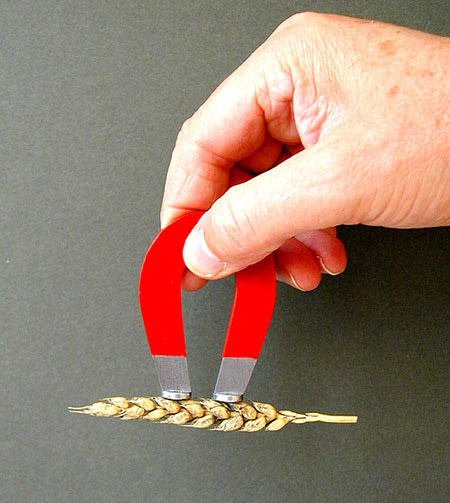

The
H-Glaze
Explained
Of all the evidence of preternatural activity associated with crop circle formation, the one case that stands out as the most intriguing was the discovery of what became known as the H-Glaze. In 1993, two crop circle researchers, Peter Sørensen and Busty Taylor, noticed a distinctive area in a recently harvested field south of the Yatesbury turn-off on the A4 in Wiltshire, England. It seemed to them that it could have been the site of a crop formation. They noticed that there was a brown deposit on both the ground and on the flattened remains of the crop. It was concentrated in three areas where the crop appeared to have been tightly swirled into circles of about 1 to 2 metres diameter. The deposit varied in thickness. In places it did little more than stain the ground but there were also areas where, it was claimed, it was thick enough to have the appearance of having flowed over the ground. The researchers collected samples and it was quickly noticed that the deposit responded to a magnetic field - an observation that led to its being given the name H-glaze. Some samples were sent to Levengood in America who later published a report1.
I first became aware of this case in 1999 and, discovering that a few samples remained in the possession of its discoverers, requested that they should be made available for further scientific testing. Taylor supplied me with one small fragment but Sørensen kindly gave me all of the few remaining samples in his possession. I examined these together with one that I borrowed from Nick Riley (the second sample) and produced a report that was published in 2001. That report can be read here.
At first, there seemed to be much that was inexplicable about the case. There was clear evidence of heating, the deposit had infiltrated into narrow cracks in the chalk substrate and much of the glaze had a coating of fragments of silica and chalk. However, over the intervening period, most, if not all, of this evidence has become untenable. In the following pages, I shall go through this evidence and, hopefully, resolve this puzzling case.
As soon as I began investigating this case, I became aware that Rob Irving had claimed that he had created it. At the time, he was reported as saying that he had used 'Iron Filings'. Even the most cursory microscopic examination of the Glaze proved that it was not composed of iron filings - that is to say, the finely reduced fragments of metal produced by passing a file over a piece of iron. Such contorted remains are easily recognisable. As a result, I didn't take his claims seriously until more recently when I was able to get a sample of the material he maintains that he used. The microscopic examination of this powder revealed its true source. Follow this investigation on the next page.
1. Levengood,
W.C. and Burke, J.A. (1995)
Semi-Molten Meteoric Iron Associated with a Crop
Formation.
Journal of Scientific Exploration, Vol. 9, No. 2, pp. 191-199.